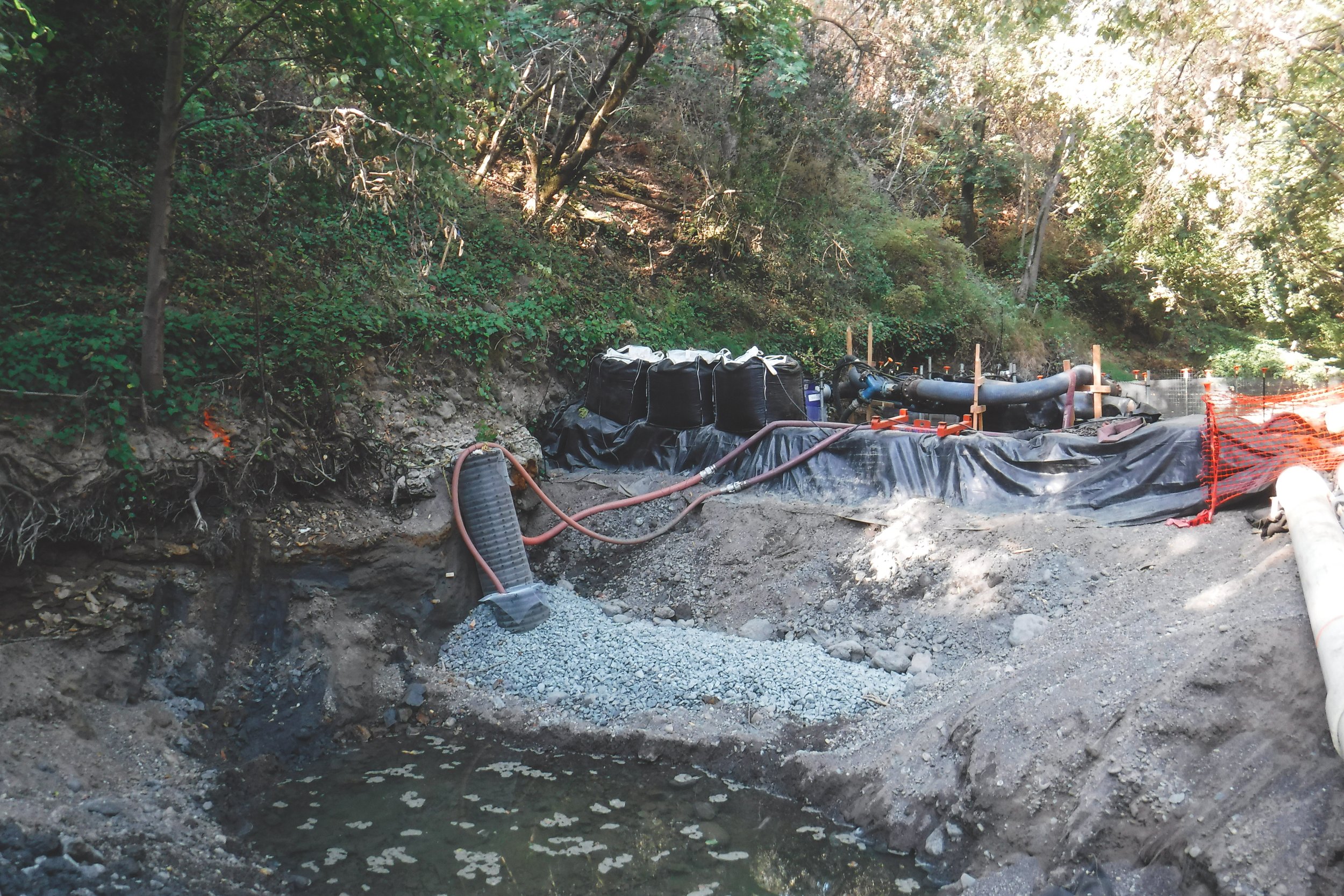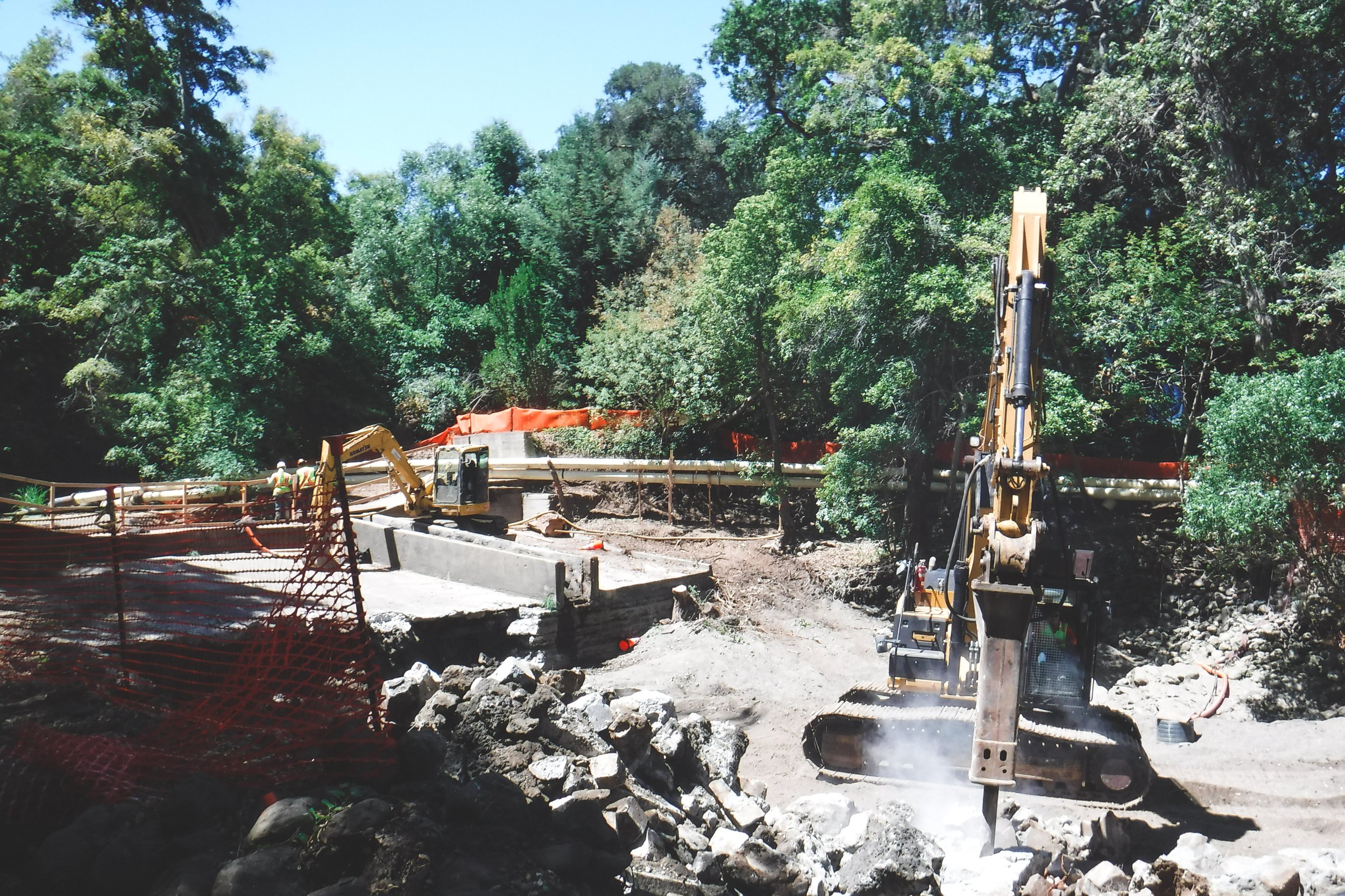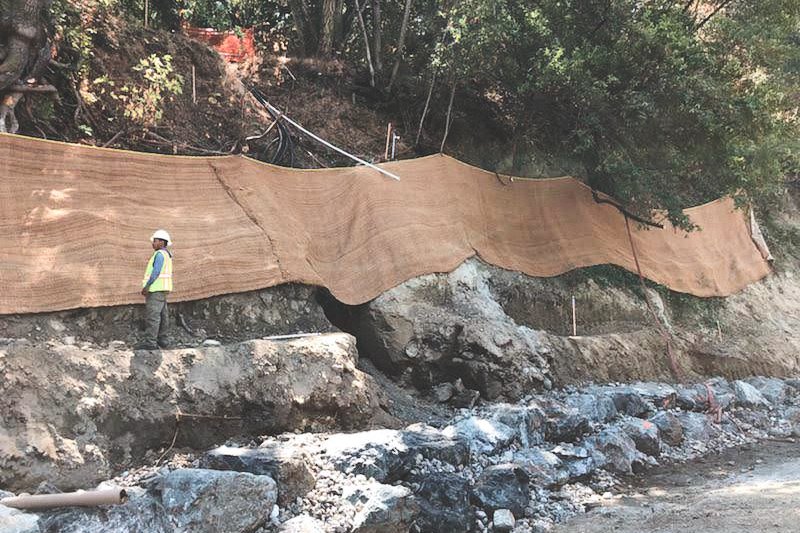Lagunita Diversion Dam Removal and Creek Restoration Project
The Lagunita Diversion Dam Removal and Creek Restoration Project is located in the central portion of the Coast Ranges a geomorphic province of California. Northwest and southeast trending valleys and ridges characterize the regional morphology of the province.
The project goals consisted of installing temporary diversion and dewatering systems, the removal of an existing diversion dam, creek restoration, installing rootwad log structures, and habitat restoration.
Project Goals
Diversion and Dewatering Systems
Designed to accommodate the estimated 10-year event up to 25 cfs.
Dewatering and fish capture and relocation were conducted in the area upstream of the Lagunita Diversion Dam
Removal of Existing Dam
Demolition activities were performed to remove the existing Lagunita Diversion Dam fish ladder, associated headwalls and gate valves using mechanical equipment.
All of the existing bank protection as well as the retaining walls on the private properties on the west side of the dam, were left in place as part of this project.
A small portion of the existing dam’s foundation at the West bank was left intact and a large imported boulder was placed adjacent to the existing retaining wall in order to provide additional protection
Construction of Creek Restoration
The low flow channel was moderately sloped towards the centerline of the channel to create a slight V-shaped configuration between station 0+00 to 0+20, 0+87 to 1+42, and 3+00 to 3+80 at the direction of the Owner’s Representative in order to further maximize flow depth for steelhead passage at very low discharges
Constructed Rootwad Log Structures
The inclusion of these large wood elements substantially increases the bank complexity, channel roughness, habitat value and natural aesthetic of the project as a whole;
Constructed Vegetated Rootwad Log Cribwall Structure
Logs were bolted together at each intersection, and then boulders, cobbles and soils will be used to fill the spaces between logs and within the log structure, such that the combined mass of logs and rocks provides the necessary stability
The vegetated log cribwall structure along the east bank was constructed to help stabilize the steep channel slope, increase slope stability, and provide bank protection consisting of a combination of boulders, large wood, and live plantings
The vegetated boulder revetment was constructed to treat a majority of the channel banks throughout the project reach in order to provide stability at extreme velocities;
Habitat Restoration
Following completion of the streambed construction, Hanford performed site re-vegetation and habitat restoration
The revegetation activities focused on the restoration of ecological processes and functions in the project area by placing native, locally occurring plants in the most species-appropriate microhabitats of the project site
Habitat restoration and re-vegetation activities were performed in all areas disturbed during construction (e.g. creek channel, staging areas, access road, etc.)
High quality biodegradable erosion control products were installed, in concert with proven native riparian plant species on the floodplain terraces, in order to provide long-term post-project erosion control through the reestablishment of a healthy riparian corridor




